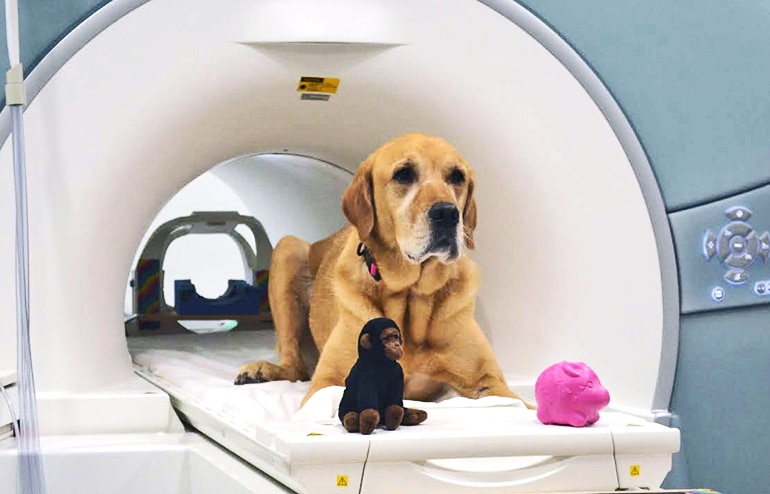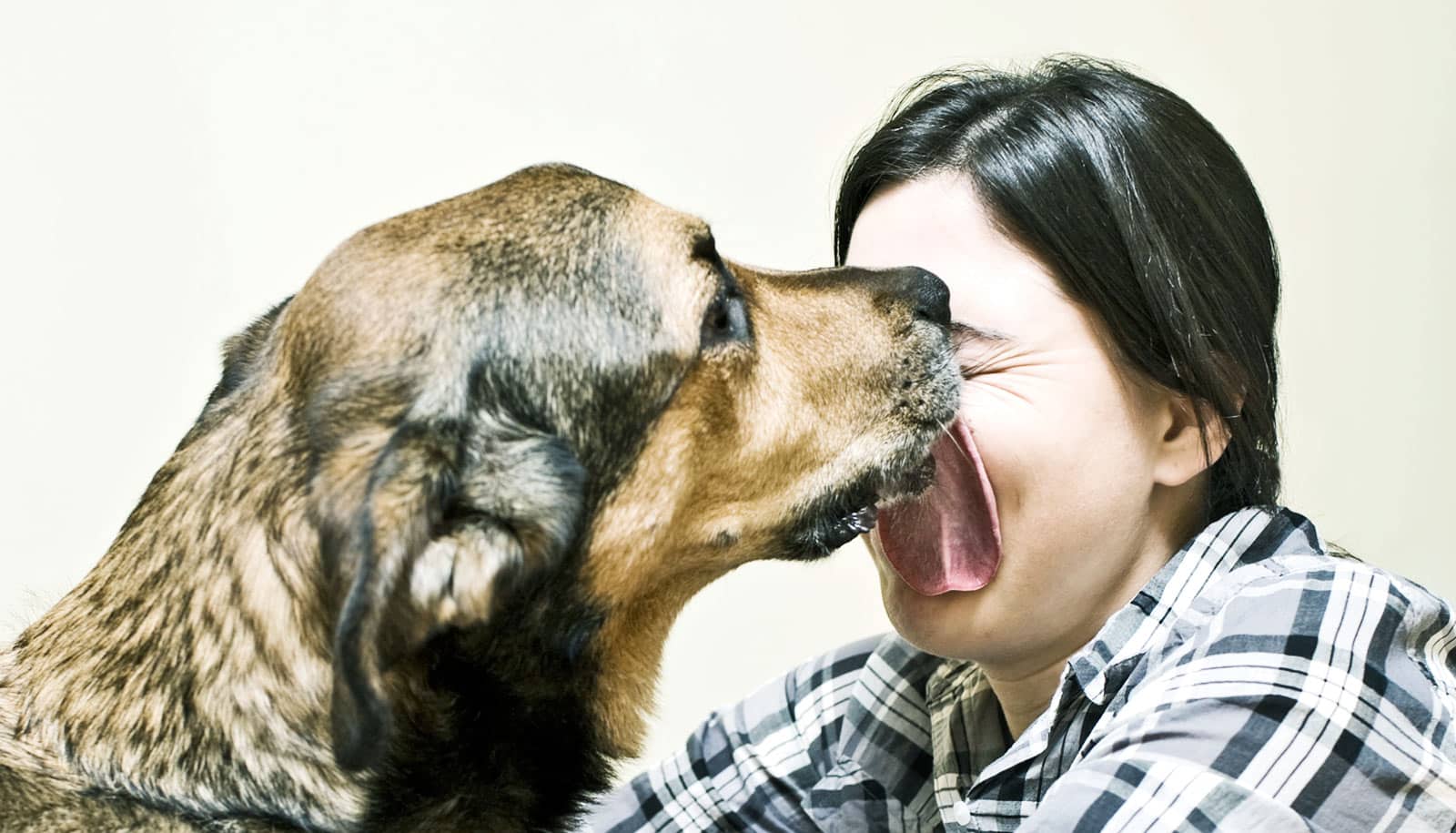Dogs have at least a rudimentary neural representation of meaning for words they have been taught, differentiating words they have heard before from those they have not, new research suggests.
When some dogs hear their owners say “squirrel,” they perk up or become agitated. They may even run to a window and look out of it. But what does the word mean to the dog? Does it mean, “Pay attention, something is happening?” Or does the dog actually picture a small, bushy-tailed rodent in its mind?
“Many dog owners think that their dogs know what some words mean, but there really isn’t much scientific evidence to support that,” says first author Ashley Prichard, a PhD candidate in the psychology department at Emory University. “We wanted to get data from the dogs themselves—not just owner reports.”

“We know that dogs have the capacity to process at least some aspects of human language since they can learn to follow verbal commands,” says senior author and neuroscientist Gregory Berns. “Previous research, however, suggests dogs may rely on many other cues to follow a verbal command, such as gaze, gestures, and even emotional expressions from their owners.”
Say, what?
Researchers focused on questions surrounding the brain mechanisms dogs use to differentiate between words, or even what constitutes a word to a dog.
Owners trained twelve dogs of varying breeds for months to retrieve two different objects, based on the objects’ names. Each dog’s pair of objects consisted of one with a soft texture, such as a stuffed animal, and another of a different texture, such as rubber, to facilitate discrimination.
Training consisted of instructing the dogs to fetch one of the objects and then rewarding them with food or praise. Training was considered complete when a dog showed that it could discriminate between the two objects by consistently fetching the one the owner requested.
During one experiment, the trained dog lay in the fMRI scanner while the dog’s owner stood directly in front of the dog at the opening of the machine and said the names of the dog’s toys at set intervals, then showed the dog the corresponding toys.
Eddie, a golden retriever-Labrador mix, for instance, heard his owner say the words “piggy” or “monkey,” then his owner held up the matching toy. As a control, the owner then spoke gibberish words, such as “bobbu” and “bodmick,” then held up different objects like a hat or a doll.
Aim to please
The results showed greater activation in auditory regions of the brain to the made-up words relative to the trained words.
“We expected to see that dogs neurally discriminate between words that they know and words that they don’t,” Prichard says. “What’s surprising is that the result is opposite to that of research on humans—people typically show greater neural activation for known words than novel words.”
The researchers hypothesize that the dogs may show greater neural activation to a novel word because they sense their owners want them to understand what they are saying, and they are trying to do so.
“Dogs ultimately want to please their owners, and perhaps also receive praise or food,” Berns says.
Different dogs, different brains
Half of the dogs in the experiment showed the increased activation for the novel words in their parietotemporal cortex, an area of the brain that the researchers believe may be analogous to the angular gyrus in humans, where we process lexical differences.
The other half of the dogs, however, showed heightened activity to novel words in other brain regions, including the other parts of the left temporal cortex and amygdala, caudate nucleus, and the thalamus.
These differences may be related to a limitation of the study—the varying range in breeds and sizes of the dogs, as well as possible variations in their cognitive abilities. A major challenge in mapping the cognitive processes of the canine brain, the researchers acknowledge, is the variety of shapes and sizes of dogs’ brains across breeds.
“Dogs may have varying capacity and motivation for learning and understanding human words,” Berns says, “but they appear to have a neural representation for the meaning of words they have been taught, beyond just a low-level Pavlovian response.”
This conclusion doesn’t mean that spoken words are the most effective way for an owner to communicate with a dog. In fact, other research also led by Prichard and Berns that appears in Scientific Reports, shows that the neural reward system of dogs is more attuned to visual and scent cues than to verbal ones.
“When people want to teach their dog a trick, they often use a verbal command because that’s what we humans prefer,” Prichard says. “From the dog’s perspective, however, a visual command might be more effective, helping the dog learn the trick faster.”
The research appears in Frontiers in Neuroscience.
Berns is founder of the Dog Project, which was the first to train dogs to voluntarily enter a functional magnetic resonance imaging (fMRI) scanner and remain motionless during scanning, without restraint or sedation.
Additional coauthors are from Emory, the New College of Florida, and Comprehensive Pet Therapy.
Source: Emory University


